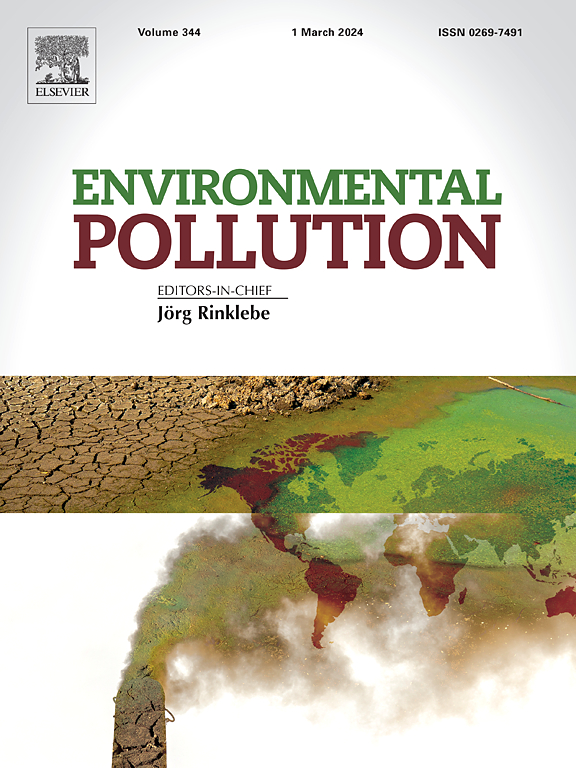Emission of CO2 enhanced by thiamethoxam and cadmium in agricultural soil
IF 7.6
2区 环境科学与生态学
Q1 ENVIRONMENTAL SCIENCES
引用次数: 0
Abstract
The coexistence of neonicotinoid insecticide thiamethoxam (TMX) and heavy metal cadmium (Cd) is quite common in agricultural soils, yet their effects on the emission of greenhouse gas CO2 remain insufficiently studied. To address this issue, microcosms spiked with singe or combined TMX (20 mg/kg) and Cd (20 mg/kg) in soil were studied for 90 days. It turned out that single TMX (+12.13 %) and Cd (+22.76 %) both stimulated the emission of CO2, and the combined TMX and Cd exhibited synergic effect (+51.00 %). The presence of Cd reduced the attenuation of TMX (−3.32 %), while the presence of TMX increased the attenuation of Cd (+3.11 %). The relative abundances of bacteria Sphingomonas, Devosia, Erythrobacter, Phaselicystis, Woeseia, FFCH7168, Rhizorhapis, Hamadaea and genes related to sugar metabolism, glycolysis and the TCA cycle were found positively correlated to CO2 emission in the studied microcosms (p < 0.05). Results from this study provide scientific basis for developing sound environmental policies that aim to reduce CO2 emission from agricultural soils.


求助全文
约1分钟内获得全文
求助全文
来源期刊

Environmental Pollution
环境科学-环境科学
CiteScore
16.00
自引率
6.70%
发文量
2082
审稿时长
2.9 months
期刊介绍:
Environmental Pollution is an international peer-reviewed journal that publishes high-quality research papers and review articles covering all aspects of environmental pollution and its impacts on ecosystems and human health.
Subject areas include, but are not limited to:
• Sources and occurrences of pollutants that are clearly defined and measured in environmental compartments, food and food-related items, and human bodies;
• Interlinks between contaminant exposure and biological, ecological, and human health effects, including those of climate change;
• Contaminants of emerging concerns (including but not limited to antibiotic resistant microorganisms or genes, microplastics/nanoplastics, electronic wastes, light, and noise) and/or their biological, ecological, or human health effects;
• Laboratory and field studies on the remediation/mitigation of environmental pollution via new techniques and with clear links to biological, ecological, or human health effects;
• Modeling of pollution processes, patterns, or trends that is of clear environmental and/or human health interest;
• New techniques that measure and examine environmental occurrences, transport, behavior, and effects of pollutants within the environment or the laboratory, provided that they can be clearly used to address problems within regional or global environmental compartments.
 求助内容:
求助内容: 应助结果提醒方式:
应助结果提醒方式:


